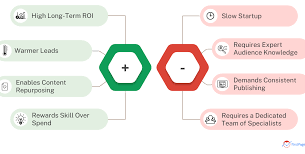[ad_1]
Stay Ahead of Your Competitors: Implement These SEO Tactics for Your E-commerce Website
In the fast-paced world of e-commerce, where competition is fierce and customers have abundant options, staying ahead of your competitors is fundamental. Search Engine Optimization (SEO) is one of the key strategies that can significantly impact your online business’s success. By implementing certain SEO tactics, you can enhance your website’s visibility, attract more organic traffic, and ultimately boost sales. In this article, we will explore some effective SEO tactics to help you stay ahead of your competitors and thrive in the e-commerce landscape.
1. Conduct Comprehensive Keyword Research:
Keywords play a crucial role in driving organic traffic to your website. Start by conducting thorough keyword research to identify relevant keywords that are often searched by your target audience. Utilize tools like Google Keyword Planner or SEMrush to find low-competition, high-volume keywords that can boost your organic rankings. Focus on long-tail keywords that are more specific and have higher purchase intent.
2. Optimize Your Website’s Structure:
A well-structured website not only enhances user experience but also improves your SEO. Ensure your e-commerce website is easy to navigate, with clear categories and subcategories. Optimize your URL structures, page titles, meta descriptions, and headers by incorporating relevant keywords. Use schema markup to help search engines understand your website’s content better and enhance your chances of appearing in rich search results.
3. Create High-Quality, SEO-Optimized Content:
Content is king in the world of SEO. Develop high-quality, original content that aligns with the interests of your target audience. Create informative product descriptions, blog posts, and how-to guides that not only educate but also captivate readers. Incorporate relevant keywords naturally throughout your content, but avoid keyword stuffing, as it can have a negative impact on your rankings. Engaging and shareable content can also attract valuable backlinks from other reputable websites, further boosting your SEO efforts.
4. Enhance Site Speed and Mobile Responsiveness:
In today’s mobile-dominated world, having a fast-loading and mobile-responsive website is essential. Google considers site speed as a ranking factor, so optimize your website’s loading time by compressing images, minifying code, and leveraging browser caching. Additionally, ensure your e-commerce website is fully responsive and provides seamless browsing experiences across different devices.
5. Utilize Social Media for SEO:
Social media platforms are not just a means to connect with your audience; they can also contribute to your SEO efforts. Create engaging social media posts with relevant keywords and share relevant content from your website. Encourage social sharing by integrating social sharing buttons on your product pages and blog posts. The more your content is shared and linked to on social media channels, the higher its visibility and chances of attracting organic traffic.
6. Optimize Your Product Images:
While textual content is important, images play a significant role in e-commerce. Optimize your product images by compressing them without compromising quality, as large file sizes can slow down your website. Add alt text to your images, containing relevant keywords, as this helps search engines understand the context of the image. Additionally, visually appealing and high-quality images can enhance user experience and increase the likelihood of conversions.
7. Leverage User Reviews and Ratings:
Customer reviews and ratings are crucial for building trust and credibility among potential buyers. Encourage users to leave reviews and ratings on your product pages. Not only do they influence buying decisions, but they also contribute to your SEO efforts. User-generated content provides fresh, relevant, and keyword-rich content, which search engines value. It also increases the likelihood of long-tail keywords being used, further expanding your website’s reach.
8. Monitor and Analyze:
Implementing SEO tactics is not a one-time task; it requires continuous monitoring and analysis. Utilize tools like Google Analytics to track your website’s performance, monitor your organic traffic, and identify areas for improvement. Regularly analyze your competitors’ strategies and keyword rankings to stay informed about emerging trends and adapt your SEO tactics accordingly. Stay up-to-date with algorithm updates and industry developments to ensure your website remains optimized.
The Ultimate Guide to B2B SEO Services: A Key Element of Digital Marketing
In conclusion, implementing effective SEO tactics is vital for staying ahead in the competitive e-commerce landscape. By conducting comprehensive keyword research, optimizing your website’s structure, creating high-quality content, enhancing site speed and mobile responsiveness, utilizing social media, optimizing product images, leveraging user reviews and ratings, and monitoring and analyzing your performance, you can significantly improve your website’s visibility and attract more organic traffic. Stay proactive, adapt to emerging trends, and continuously refine your SEO strategies to stay ahead of your competitors and thrive in the ever-evolving world of e-commerce.
[ad_2]






